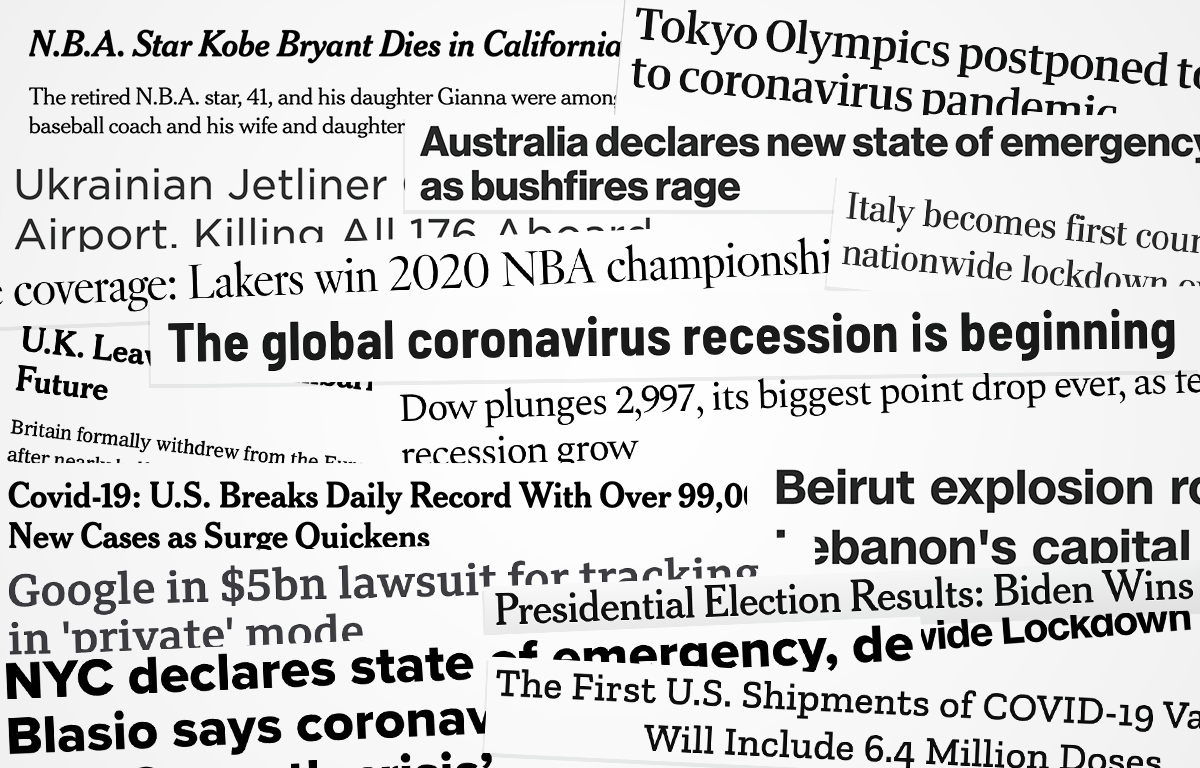
Articles | December 22, 2020 | 3 min read
3 Considerations for Marketing in the New Year
Businesses faced astounding changes in 2020. Among other things, decision makers dealt with a pandemic, a presidential election, and a recession. But what was more astounding was how decision makers overcame these obstacles to achieve success. With that said, here are 3 considerations for marketing in the new year.
If nothing else, 2020 was the most emotion-evoking year in recent memory. Fear, anger, doubt, and disappointment were just a few of the emotions people felt on a weekly basis.
Heading into 2021, none of these feelings will go away. Instead they’ll linger for months on end (likely until a COVID-19 vaccine becomes widely available). For business owners and leaders, the challenge will be creating messaging that speaks to the multitude of emotions consumers could be feeling at any given moment.

Answers to tone-related questions lie in obtaining an accurate picture of who the customer is today and what that customer will want tomorrow. Obtaining that picture can only be done through cleaner consumer signals.
Accurate consumer signals—behavioral signals, intent signals, geographic signals, etc.—will be a lighthouse for decision makers exhausted from steering their brands through a stormy 2020.
The emphasis is on “accurate” for a reason. The combined effects of a pandemic and recession (unemployment, social distancing, surging online shopping, etc.) mean the accuracy of traditionally trustable signals is now in question.
For example, in 2019, decision makers could use time-on-site as a signal to determine consumer intent. The longer the time-on-site, the higher the presumed intent to purchase. But in 2020—a year where lockdowns, social distancing, and large-scale unemployment sent device usage and weekly screen time soaring—time-on-site deteriorated into a less-than-accurate signal for measuring consumer intent to purchase.
Next year, business leaders know they’ll need to pay close attention to the customer signals guiding their decision making.
In years past, marketing leaders could build robust, set-in-stone marketing plans with locked-in campaigns for the entire year.
Then 2020 happened.

2020 was a crash-course in embrace-the-moment marketing. The effects of a pandemic, a recession, and civil unrest forced marketers to become agile and adaptable in an unimaginable way. Instead of executing meticulously developed annual plans, marketers were developing net-new campaigns on what felt like a weekly basis.
Heading into the new year, the implementation of real-time marketing will be huge. In other words, marketing that can adapt to today’s cultural or economic climate (and do so as it changes shape) with minimal effort.
Adopting a real-time marketing strategy built to change with evolving consumer expectations is critical for marketers at enterprise brands. Why? Because implementing a strategy shift at larger brands is like trying to do a u-turn in an 18-wheeler on a one-lane road.
Next year won’t be easy for businesses. But with any luck, it won’t be as backbreaking as 2020 either. Speaking to consumers in the right way (addressing wants and needs through the right channel at the right time) will require better data and more effective decision making. At Zeta, we believe the best way to achieve this outcome is through the use of results-driven AI. Something that can unlock consumer intent and personalize experiences so acquisition, retention, and growth soar.
To learn more about how we can help brands like yours thrive next year, contact us here.
#1 – Speaking to people the right way
If nothing else, 2020 was the most emotion-evoking year in recent memory. Fear, anger, doubt, and disappointment were just a few of the emotions people felt on a weekly basis.
Heading into 2021, none of these feelings will go away. Instead they’ll linger for months on end (likely until a COVID-19 vaccine becomes widely available). For business owners and leaders, the challenge will be creating messaging that speaks to the multitude of emotions consumers could be feeling at any given moment.

Answers to tone-related questions lie in obtaining an accurate picture of who the customer is today and what that customer will want tomorrow. Obtaining that picture can only be done through cleaner consumer signals.
#2 – Getting cleaner consumer signals
Accurate consumer signals—behavioral signals, intent signals, geographic signals, etc.—will be a lighthouse for decision makers exhausted from steering their brands through a stormy 2020.
The emphasis is on “accurate” for a reason. The combined effects of a pandemic and recession (unemployment, social distancing, surging online shopping, etc.) mean the accuracy of traditionally trustable signals is now in question.
For example, in 2019, decision makers could use time-on-site as a signal to determine consumer intent. The longer the time-on-site, the higher the presumed intent to purchase. But in 2020—a year where lockdowns, social distancing, and large-scale unemployment sent device usage and weekly screen time soaring—time-on-site deteriorated into a less-than-accurate signal for measuring consumer intent to purchase.
Next year, business leaders know they’ll need to pay close attention to the customer signals guiding their decision making.
#3 – Real-time planning
In years past, marketing leaders could build robust, set-in-stone marketing plans with locked-in campaigns for the entire year.
Then 2020 happened.

2020 was a crash-course in embrace-the-moment marketing. The effects of a pandemic, a recession, and civil unrest forced marketers to become agile and adaptable in an unimaginable way. Instead of executing meticulously developed annual plans, marketers were developing net-new campaigns on what felt like a weekly basis.
Heading into the new year, the implementation of real-time marketing will be huge. In other words, marketing that can adapt to today’s cultural or economic climate (and do so as it changes shape) with minimal effort.
Adopting a real-time marketing strategy built to change with evolving consumer expectations is critical for marketers at enterprise brands. Why? Because implementing a strategy shift at larger brands is like trying to do a u-turn in an 18-wheeler on a one-lane road.
What brands can do to get ahead with marketing in the new year
Next year won’t be easy for businesses. But with any luck, it won’t be as backbreaking as 2020 either. Speaking to consumers in the right way (addressing wants and needs through the right channel at the right time) will require better data and more effective decision making. At Zeta, we believe the best way to achieve this outcome is through the use of results-driven AI. Something that can unlock consumer intent and personalize experiences so acquisition, retention, and growth soar.
To learn more about how we can help brands like yours thrive next year, contact us here.


